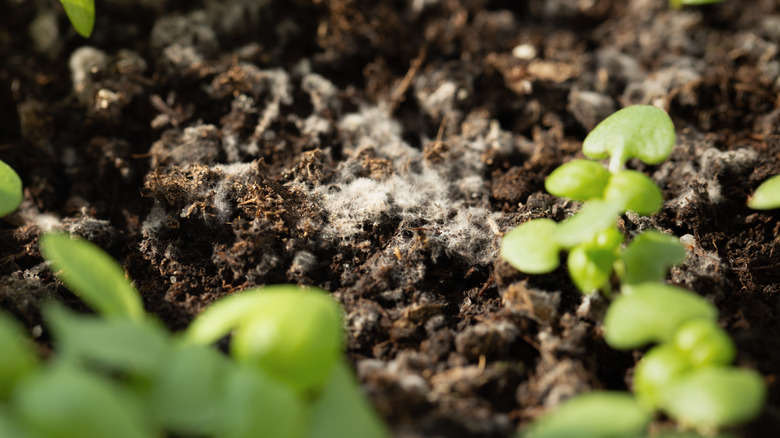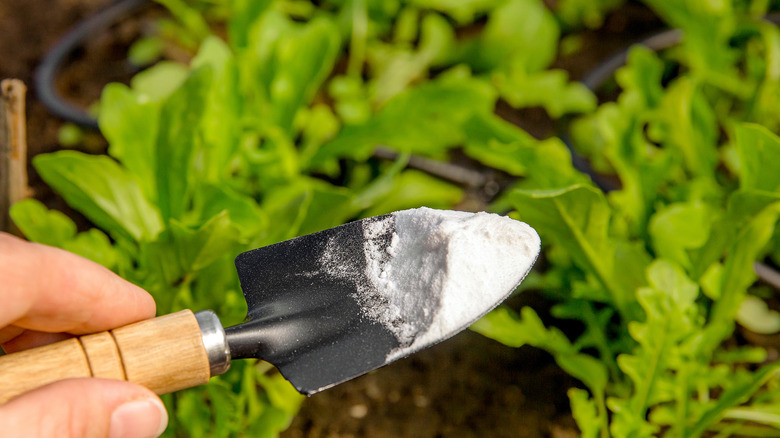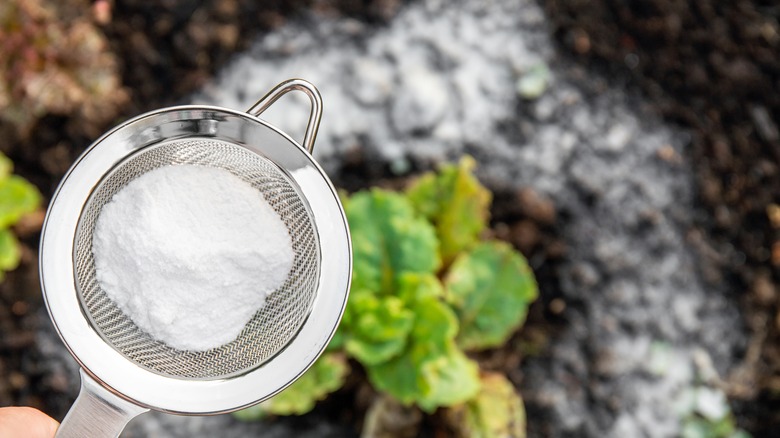Can You Use Baking Soda To Prevent Mold From Growing On Your Seedlings?
When starting seeds indoors, creating a balance of moisture and humidity is crucial to get them to sprout. But, this environment can also inadvertently create mold growth on the soil's surface. Given the right conditions, it can appear quickly due to the moist environment. Poor air circulation can also exacerbate mold growth, allowing moisture to linger on the soil. Symptoms of mold growth may look like the formation of fuzz on the soil, rotting stems, and deterioration of roots.
Mold is a common problem among gardeners. But does that mean that baking soda can prevent it? While baking soda can be used for some plants and for conditions like powdery mildew, it should not be used on seedlings. It can be used on the soil's surface for established plants and before seeds begin to sprout. Baking soda increases the soil's pH due to the molecule of bicarbonate within it, and while increasing soil pH has its place, for seedlings, it can make certain essential nutrients unavailable for them to grow properly, leading to premature death.
Is baking soda harmful to seedlings?
Baking soda is harmful to seedlings. In addition to increasing the pH of the soil, it also increases the salinity. So, while this makes it inhabitable for fungi, it also makes it harmful to seed germination, preventing seedlings from taking up water. Exposing seeds to high levels of salinity can also compromise their resilience and reduce their strength, making them less likely to survive and withstand environmental stressors.
One way to prevent mold growth on seedlings is to start your seeds outdoors and expose them to air movement. Stagnant air, like air indoors, can cause fungi, mold, and bacteria to grow. Exposing seedlings to consistently moving air can decrease the chances of pathogen growth. Another way to prevent mold from forming is to use a non-soil potting material like vermiculite or perlite. These are considered inert growing materials. They are chemically neutral, meaning they have no additional ingredients that interfere with plant nutrients. You can also opt for an all-purpose fungicide that targets mold growth, but you'll want to wait until seedlings have matured to prevent any injury from fungicides.
Can I put baking soda directly on the soil?
While plants need sodium, they don't need much of it. Adding baking soda to the soil can cause an excess of salt, which is unnecessary and harmful. Instead of benefitting the plant, it may lead to negative consequences due to salt accumulation. For instance, salt build-up from baking soda can contribute to soil compaction and toxicity. Stunted growth, yellow leaves, and even plant death can all occur as a result of continuous exposure to excessive amounts of salt in the soil.
While you can put baking soda directly on the soil, you'll want to approach it with caution, knowing the potential risks to your plants. If you decide to apply baking soda, you'll want to create a baking soda mixture and apply it directly to the soil. Make sure you either do it before seedlings have sprouted or once you have more matured plants. To do this, mix one tablespoon of baking soda in a gallon of water, spraying the solution on after you water. This is the most common method and can be used to target the early stages of pathogens or before they're present. The other thing to know is that it's a short-lived solution and only suppresses mold spore growth but doesn't kill them. Although it may have some potential benefits in lessening the proliferation of mold spores, using baking soda to prevent mold growth may not be the best method, especially for seedlings.


